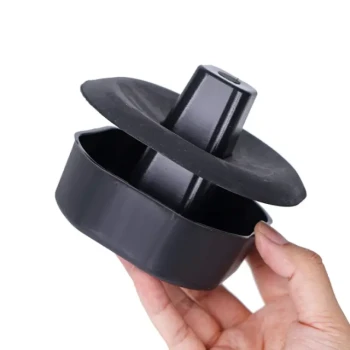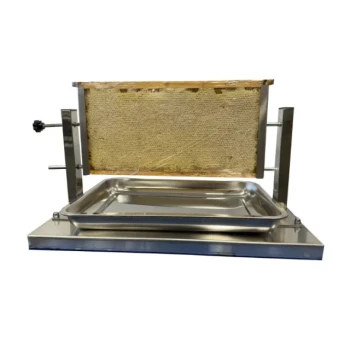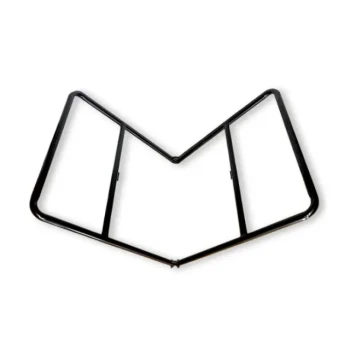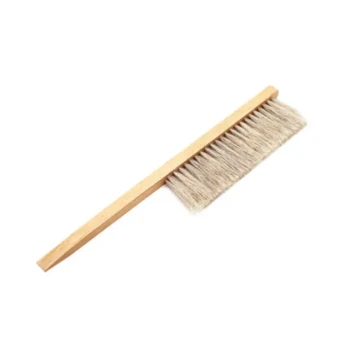The most commonly recommended height for a hive stand is approximately 16 to 18 inches off the ground. This height is a strategic starting point derived from balancing pest management with practical beekeeping ergonomics. It is high enough to deter common predators like skunks while remaining low enough for most beekeepers to safely lift heavy boxes.
The optimal hive stand height is not a single universal number. It is a calculated decision that balances three critical factors: effective pest control, the beekeeper's physical health, and local environmental conditions.

Key Factors Influencing Hive Stand Height
Choosing the right height is about understanding the forces working against your hive from both the ground up and the top down. Each factor requires careful consideration for the long-term health of your bees and your back.
Pest & Predator Management
The most cited reason for a specific stand height is to protect the colony. An elevated hive entrance is the first line of defense.
Skunks are a primary threat; they will scratch at a hive entrance at night to draw out guard bees and eat them. A stand height of 16 inches or more generally prevents them from comfortably standing on their hind legs to reach the entrance.
Elevating the hive also protects the wooden bottom board from constant ground moisture, which prevents rot and reduces the likelihood of pests like slugs and beetles seeking refuge underneath.
Beekeeper Ergonomics
This is the most overlooked, yet most critical, factor for the beekeeper's longevity in the hobby. A poorly positioned hive is a direct cause of back strain.
A full honey super can weigh over 50 pounds (23 kg). Lifting these boxes from or to a hive that is too low or too high dramatically increases the risk of injury.
The ideal working height places the heaviest boxes—the lower brood chambers—at a level where you can inspect them with a comfortable bend at the knees, not the waist. The top honey supers should be no higher than your chest for safe lifting.
Environmental Conditions
Your local climate dictates different needs. In areas with heavy snowfall, a taller stand ensures the hive entrance remains clear throughout the winter.
In very damp or flood-prone regions, a higher stand is essential insurance against water damage and excess moisture wicking into the hive body.
Material and Construction Practicality
The 16-inch recommendation is also a product of efficiency. A standard 8-foot (96-inch) board can be cut into six 16-inch sections with zero waste, making construction simple and cost-effective.
While convenient, this should not be the primary factor in your decision. Adjusting the height by a few inches to save your back is a worthwhile investment.
Understanding the Trade-offs
Optimizing for one factor often means compromising on another. Understanding these compromises is key to finding the right balance for your specific situation.
The Problem with "Too High"
A very high stand (e.g., 24 inches or more) can become unstable, especially for a tall Langstroth hive stack. This increases the risk of the hive tipping over in high winds or if accidentally knocked.
Lifting heavy honey supers to chest or shoulder height on a tall hive is strenuous and dangerous. This significantly increases the physical demand of honey harvesting.
The Problem with "Too Low"
A stand that is too low—less than 12 inches—negates many benefits. It offers little protection from skunks and can expose the bottom board to moisture and rot.
Most importantly, it forces the beekeeper to constantly bend over or kneel, placing significant strain on the back and knees during every single inspection.
Making the Right Choice for Your Goal
Select a height based on your primary objective for the apiary. Your environment and physical needs should be the deciding factors.
- If your primary focus is aggressive pest control: Aim for a stand height of 16-18 inches to effectively deter skunks and reduce ground moisture.
- If your primary focus is protecting your back: Position the stand so the top of it is roughly knee-high, allowing you to work the brood boxes without bending your back.
- If your primary focus is managing heavy snowfall: Ensure the stand is tall enough to keep the hive entrance well above your area's average snow depth.
- If your primary focus is a balanced, all-purpose setup: Start with the 16-inch standard and adjust based on your personal comfort and local landscape.
Ultimately, the right hive stand serves both the long-term health of the bees and the physical well-being of the beekeeper.
Summary Table:
| Factor | Key Consideration | Ideal Height Range |
|---|---|---|
| Pest Control | Deters skunks, reduces ground moisture. | 16-18 inches |
| Beekeeper Ergonomics | Prevents back strain when lifting heavy boxes. | Top of stand at knee height |
| Environmental Conditions | Keeps entrance clear of snow or floodwater. | Adjust based on local climate |
Ready to build a healthier, more productive apiary?
As a commercial beekeeper or distributor, the right equipment is foundational to your success. The optimal hive stand height is just one piece of the puzzle. HONESTBEE supplies durable, high-quality beekeeping supplies and equipment designed for the demands of commercial-scale operations.
We help you:
- Maximize Efficiency: Source reliable equipment that saves time and reduces physical strain.
- Protect Your Investment: Use stands and hardware built to last, protecting your colonies season after season.
- Scale Your Operation: Access wholesale-focused pricing and bulk quantities to support your growth.
Let's discuss your specific needs. Contact our expert team today to get the right equipment for your apiary.
Visual Guide
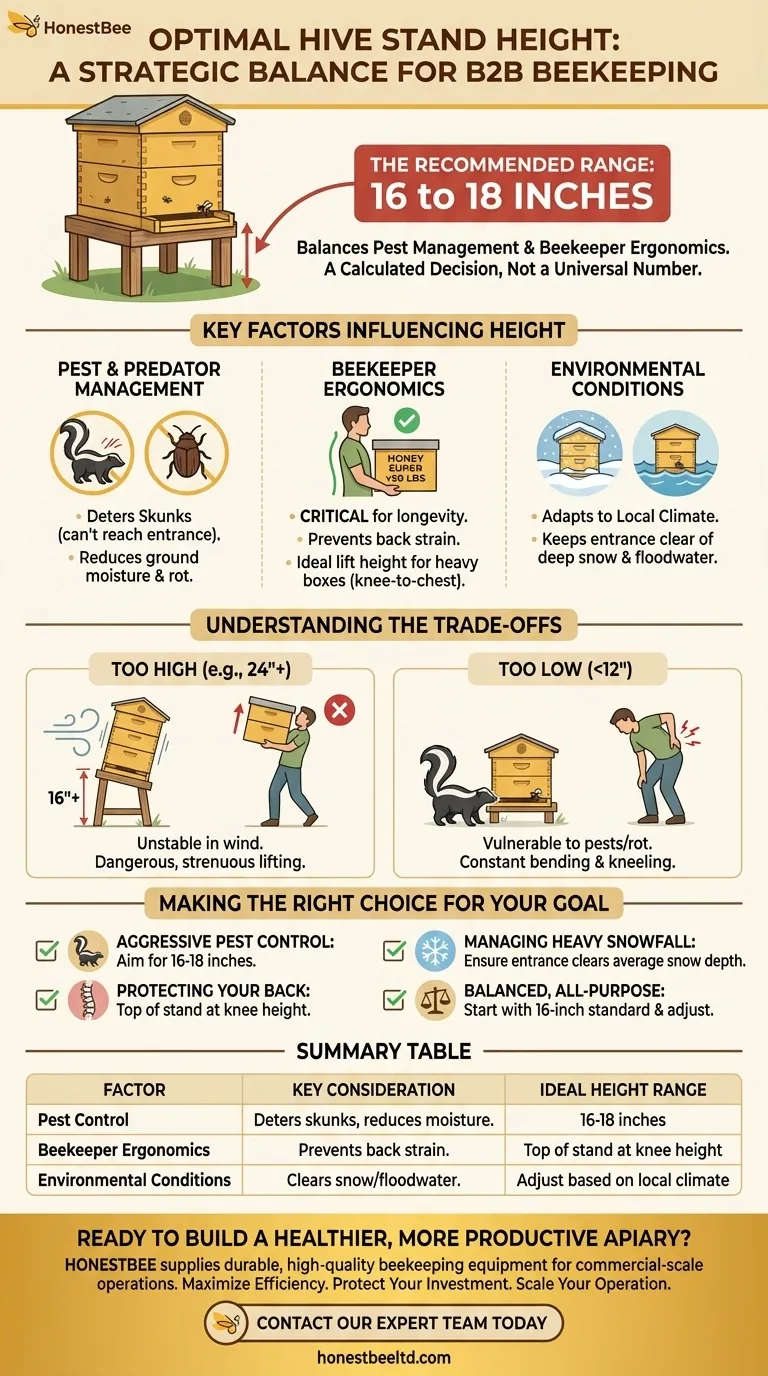
Related Products
- Professional Engraved Round Hive Number Tags for Beekeeping
- Plastic Bee Hive Stand for Beekeeping
- Metal Hive Feet Bee Hive Stand for Ant Protection
- Metal Bee Hive Stand Bee Box Stand for Beekeeping
- Wholesales Dadant Size Wooden Bee Hives for Beekeeping
People Also Ask
- What is the purpose of a hive stand, and why is it beneficial? Elevate Your Hive for Colony Health and Beekeeper Comfort
- Do I need a hive stand? Essential for Bee Health & Easier Beekeeping
- Why should beekeepers consider using hive stands? Protect Your Hives and Your Back
- What maintenance is required for hive straps? A Guide to Cam Buckle vs. Ratchet Strap Care
- Why is it recommended to buy at least two bee hives? Boost Your Success with a Second Colony






